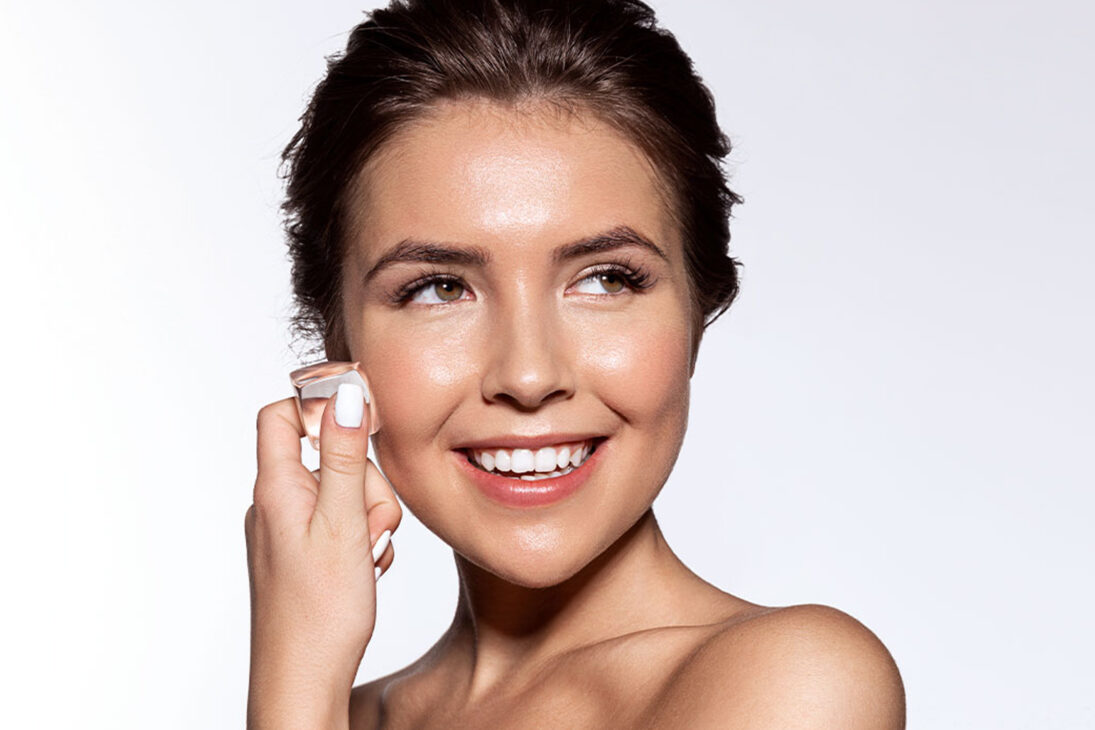“Chilling Efficacy: The Impact of Ice on Pimples and Acne”

From relieving inflammation to relieving pain, surprising ways an ice pack can work for you.
There are no overnight solutions to acne. If you’re struggling with painful and angry breakouts, applying ice for pimples can help reduce the inflammation and ease the pain.
Ice cannot cure acne and pimples, but does ice help treat acne? However, it is an effective remedy for temporary relief and can help you manage the breakouts in a number of ways. Before you reach for the ice cube, read this article to understand how ice can help with acne, how to use it properly, and what precautions to take. Scroll down.

Ice for Acne: Does an ice cube help cure acne and pimples?
Using cold treatment to cure acne is not new. This idea was developed by Giraudeau in 1925. He suggested the use of acetone, carbon dioxide snow, and sulfur to treat acne (1). An English doctor, James Arnott, advocated the use of cold treatment to relieve acne (2). Ice therapy has incredible benefits for acne – and they are discussed below:
1. It reduces swelling and inflammation
Sounds good. Redness and swelling can be an absolute nightmare when you’re struggling with cystic acne. When you apply ice to the acne or pimple, it constricts the blood vessels and reduces inflammation (3). Ice has a numbing effect on the skin and slows blood circulation. This will give you instant relief.
If you notice redness or dryness after icing your acne, apply some olive oil or aloe vera gel to the affected area for a soothing effect.
2. It helps in shrinking pores
One of the main causes of acne is clogging of skin pores due to the accumulation of dirt and dead skin cells. Further bacterial invasion leads to acne in these areas. Ice packs help tighten skin pores so bacteria and other irritants cannot clog them.
Applying ice to your acne is one of the most amazing home remedies that can only help if it is inflammatory acne. This means that you will feel relief when you apply ice to papules, cysts, nodules, and pustules.
Ice does not help with non-inflammatory acne. In other words, it doesn’t work on blackheads and blackheads.
Before applying ice to your face, it’s important to learn how to use it – because ice can burn your skin and increase irritation if you don’t use it correctly.
How to Apply Ice to Acne or Pimples for Quick Relief
Apply an ice pack to the pimples
Avoid applying ice directly to your face. Here are some ways you can follow for safe use:

1. Make an ice pack
Wrap the ice cubes in a towel or place them in a sandwich bag (if you have one). You can also wrap a single cube with a cotton cloth. Rub it on the affected area for about 10 minutes. Take a break for 3-4 minutes and then reapply. Make sure you never use ice on your skin for longer than 20 minutes.
2. Incorporate ice or cold water into your skin care routine
If your acne is mild, you can skip the ice cube. Using cold water on your face can have similar effects. Splash cold water on your face morning and evening. A gentle cleanser is enough to keep your skin clean.
However, for mild acne, you can always use ice packs. Apply a cold compress to your skin for 5 minutes before bed.
3. Make an infusion
You can mix water, a few drops of lemon juice and a few drops of tomato juice and then freeze. Rub the ice cube on the affected area.
However, keep in mind that according to dermatology, lemon juice should be avoided if your skin is sensitive or excessively dry, as it is highly acidic and can cause skin damage.
You can also brew some tea (use green tea or chamomile tea) and then freeze it. Rub the frozen tea cubes on your face.

4. Dip your face in ice water
Take cold water in a bowl. Add ice cubes. You can even add lemon and cucumber pieces to the water. Submerge your face in the water for a few seconds. Repeat the process for 2 to 3 minutes.
What you should know before applying ice to acne or pimples
Applying ice to acne can cause the pus to rise to the surface. Although it may be tempting to pop it, avoid it because popping acne or pimples can worsen inflammation and even lead to scarring.
Be careful with ice. If you leave it on your skin for too long, it can cause frostbite. Therefore, use it at short intervals.
Consult a doctor if you notice side effects such as redness and numbness in the affected area.
Be careful when grating ice. Any friction or irritation can make acne worse.
If you use a hot compress (to open skin pores), always use it before applying ice to your face. Never use a warm compress after applying ice as this could cause further damage to the skin.
Acne is annoying – and that’s why you have to be patient. Give your skin some time to recover. While ice treatment can give you immediate or temporary relief, it’s not the only thing you should rely on to treat your acne. Check your lifestyle habits, talk to your doctor and act accordingly.
Infographic: Ways to Use Ice for Pimples
Cold therapy is one of the oldest therapies used to treat breakouts and provide temporary relief. Using ice for pimples has many benefits that you must be aware of by now. Check out the infographic below for an overview of the different ways you can use ice for your pimples.
